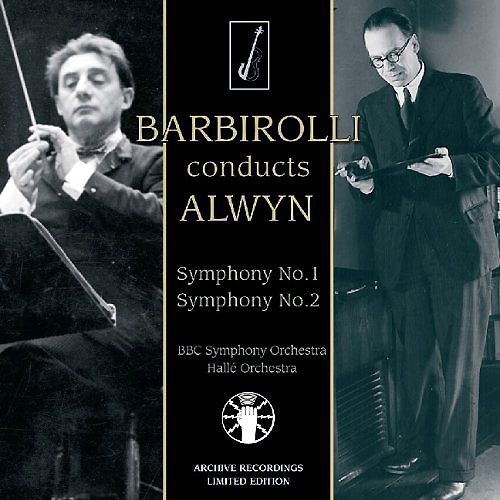wimpel69
02-28-2013, 02:32 PM
These are the four CDs released by the English specialty label Lyrita Records of works by
film and concert composer William Alwyn, which include his 5 published symphonies,
the harp concerto Lyra Angelica, the symphonic prelude The Magic Island, a set of
Elizabethan Dances plus other short orchestral works. They were recorded under the
composer's baton in the 1970s, and his readings have not been surpassed by either Richard
Hickox on Chandos nor David Lloyd-Jones on Naxos. Enjoy!
Born in 1905, William Alwyn was among the large group of post-Romantic English composers who
gained popularity in the wake of Ralph Vaughan Williams and Gustav Holst. A prolific composer, as well
as a flautist and teacher, he worked successfully in various forms and idioms.
Alwyn was educated at the Northampton Grammar School, where he proved a promising student in both
music and art. He attended the Royal Academy of Music from 1920 to 1923, by which time he had
settled on composition as his main interest in life. His studies were interrupted by the death of his father
when he was eighteen, and he was forced to go to work. He taught in a preparatory school and made
the rounds of theater orchestras as a flautist before returning to the Academy three years later as a
composition teacher. Alwyn's own breakthrough as a composer took place in 1927, when Sir Henry Wood
conducted the premiere of his Five Preludes for Orchestra at a promenade concert in London. His Piano
Concerto was finished in 1930, and his oratorio, a setting of The Marriage of Heaven and Hell by William
Blake, was completed in 1936. Despite many honors and awards, Alwyn abruptly abandoned all of his
early works in 1939, regarding his technique as inadequate.
Alwyn turned to neo-classicism in the 1940s, and found inspiration for a resumption of his career. His later
work included four symphonies, the first dating from 1949, two concerti grossi, a series of four Scottish Dances,
and several programmatic orchestral works including the symphonic prelude The Magic Island, the gorgeous
and haunting Lyra Angelica for harp and strings, and Autumn Legend, as well as a pair of string quartets
and other chamber pieces, and the operas The Libertine and Miss Julie. His seventy film scores include
Penn of Pennsylvania (1941), Green For Danger (1946), Odd Man Out (1946), The Fallen Idol (1948),
and The Rocking Horse Winner (1950), as well as many documentaries. He was made a Fellow of the
British Film Academy. In 1955, Alwyn gave up his teaching position, and from 1961 onward pursued
composition virtually exclusively. In 1978, he was knighted. Alwyn died in 1985.
There was something of an Alwyn renaissance in the 1970s, both in performance and a series of landmark
recordings by the London Philharmonic Orchestra, conducted by the composer himself, for the Lyrita label.
In the 1980s and 1990s, younger conductors on other labels -- most notably Chandos -- began recording
the symphonies and other orchestral works.
Alwyn's music is melodic and eminently accessible, if not always as adventurous as modern listeners
might expect. His tunecraft could be both subtle and profound, as in The Magic Island (inspired by
Shakespeare's The Tempest and the Lyra Angelica, both compelling visions of beauty and mystery that
rank among the finest pieces of program music of their era. His symphonies are plainer and dryer, but only
slightly less attractive, with beautiful scoring and great technical vitality. All of these pieces were often
regarded as out-of-date in the relentlessly avant-garde world of contemporary music at the time they
were published, and they were largely ignored outside of England at the time. With the rebirth of interest
in twentieth-century English music, however, Alwyn's work has gradually been finding a wider audience
since the 1980s.
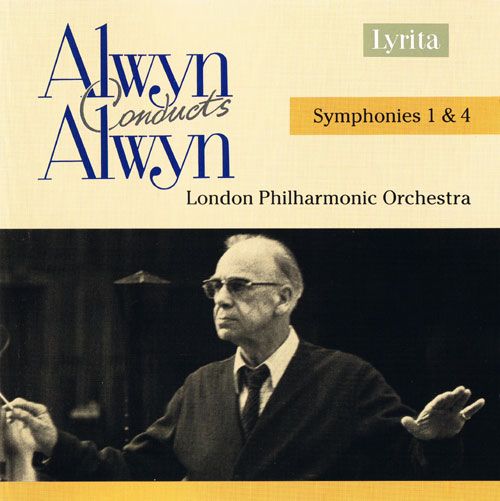
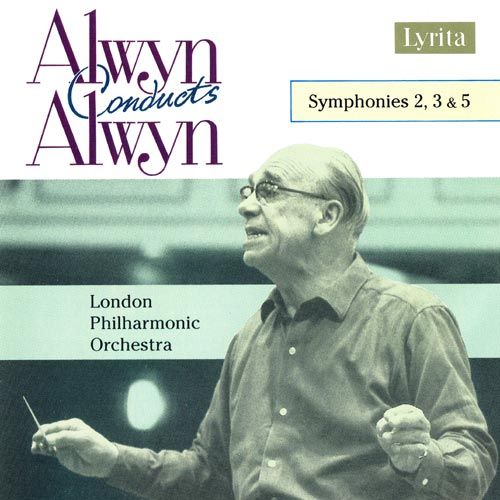
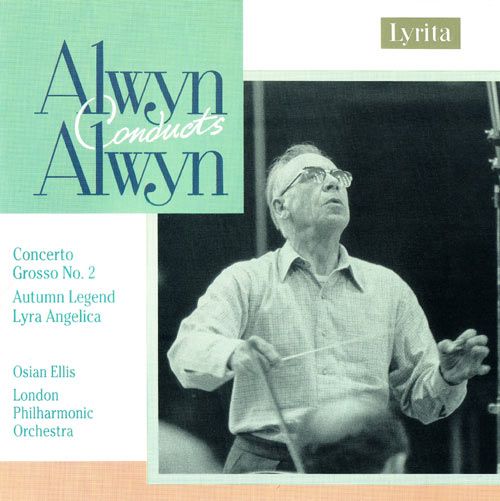
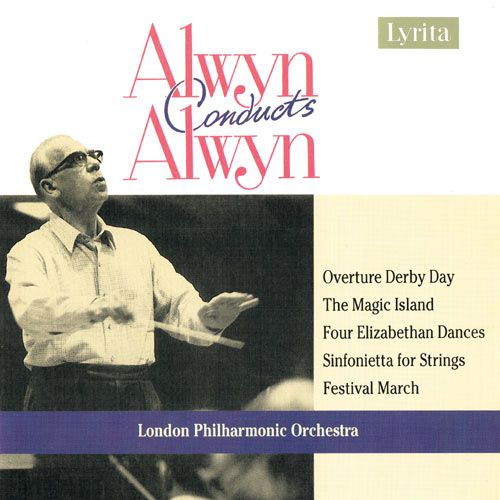
Music Composed and Conducted by William Alwyn
Played by the London Philharmonic Orchestra
With Ossian Ellis (harp)
"The London Philharmonic seemed to take Alwyn to its heart for these two eminently approachable symphonies
in warm-hearted performances, recorded in crystalline detail yet with full-bodied sound.
The First Symphony was dedicated to Sir John Barbirolli and was composed in 1949. The first movement reveals
a sure structural grasp (the music is always directional, always sure of where it is going); the second movement
is a mercurial Scherzo revealing the LPO on magnificent, quixotic form. Accents are perfectly highlighted and
there is a real sense of life coming from within. The Trio is an oasis away from the rhythmic verve of the Scherzo,
making the rhythmic life the more effective when it bursts back upon the scene.
The hushed lyricism of the cello line towards the start of the Adagio ma con moto is a marvel here, phrasally
tender and tonally lush. Surely this is the symphony’s peak, for it is here that Alwyn’s invention is at its most
unforced. The finale, despite its ‘allegro jubilante’ marking, includes a fair few shadows that seem determined to
rain on the music’s parade – things are not as clear-cut in Alwyn the symphonist as may be assumed from
Alwyn the miniaturist.
The Fourth Symphony dates from a decade later. It begins in a gentle and undemanding fashion – the tonally-
ambiguous melodic lines give the music a fluidity that is certainly most appealing. Climaxes are impressive (as in
the First Symphony, there is no doubt as to the LPO’s dedication); the extended Scherzo (longer than the first
movement, in fact) is marvellously sprightly. This gives way to the tranquillity of the finale, a tripartite Adagio-
Allegro-Adagio structure, the final Adagio section of which contains the most moving music on the disc.
Well worth exploring."
Musicweb International
"As good as it gets with Alwyn's orchestral music, this coupling of the two-movement Second, three-movement
Third, and single-movement Fifth symphonies presents a cogent and compelling case for the composer as a modern-
day Romantic. And these 1972 and 1975 recordings of the works with the composer himself leading the London
Philharmonic Orchestra are the best single-disc introductions to his music. While John Barbirolli and the Hall�'s early
recordings of the First and Second were expansively emotional and Richard Hickox and the London Symphony
Orchestra's digital recordings of the complete cycle were powerfully persuasive, Alwyn, a decent conductor
though not in the same league as Barbirolli or Hickox, knew his music better than anyone and he finds heights
and depths in it that others miss. With the keen and alert playing of the London Philharmonic, Alwyn makes
the Second more thematically cogent, the Third more dramatically convincing, and the Fifth and final symphony,
called "Hydriotaphia" after Thomas Browne's poetic study of urn burial in Norfolk more massive, more monumental
and more overwhelmingly affecting. Recorded in crisp, colorful, and deep stereo by Lyrita, this disc belongs in
every collection of postwar English orchestral music."
All Music

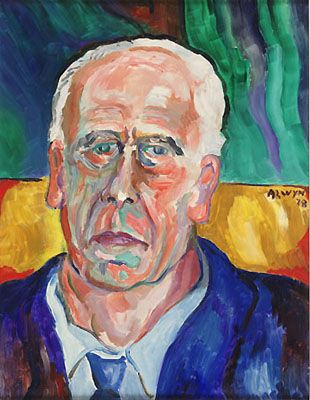
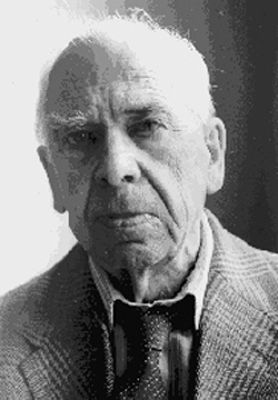
Source: Lyrita CDs (my rips!)
Format: mp3, 320k/s (CBR), ADD Stereo
File Size: 771MB
Download Link (re-up, incl. bonus disc): https://mega.co.nz/#!2l4UwTbT!P_h8QBO6lrvwfpxeabm8xFC5HGVQi25Ijc9UlSX uSLA
Please don't ask for lossless!
Enjoy! Don't share! Buy the originals! :)
A word of Thanks in this thread will get you a bonus CD with music by William Alwyn! ;)
film and concert composer William Alwyn, which include his 5 published symphonies,
the harp concerto Lyra Angelica, the symphonic prelude The Magic Island, a set of
Elizabethan Dances plus other short orchestral works. They were recorded under the
composer's baton in the 1970s, and his readings have not been surpassed by either Richard
Hickox on Chandos nor David Lloyd-Jones on Naxos. Enjoy!
Born in 1905, William Alwyn was among the large group of post-Romantic English composers who
gained popularity in the wake of Ralph Vaughan Williams and Gustav Holst. A prolific composer, as well
as a flautist and teacher, he worked successfully in various forms and idioms.
Alwyn was educated at the Northampton Grammar School, where he proved a promising student in both
music and art. He attended the Royal Academy of Music from 1920 to 1923, by which time he had
settled on composition as his main interest in life. His studies were interrupted by the death of his father
when he was eighteen, and he was forced to go to work. He taught in a preparatory school and made
the rounds of theater orchestras as a flautist before returning to the Academy three years later as a
composition teacher. Alwyn's own breakthrough as a composer took place in 1927, when Sir Henry Wood
conducted the premiere of his Five Preludes for Orchestra at a promenade concert in London. His Piano
Concerto was finished in 1930, and his oratorio, a setting of The Marriage of Heaven and Hell by William
Blake, was completed in 1936. Despite many honors and awards, Alwyn abruptly abandoned all of his
early works in 1939, regarding his technique as inadequate.
Alwyn turned to neo-classicism in the 1940s, and found inspiration for a resumption of his career. His later
work included four symphonies, the first dating from 1949, two concerti grossi, a series of four Scottish Dances,
and several programmatic orchestral works including the symphonic prelude The Magic Island, the gorgeous
and haunting Lyra Angelica for harp and strings, and Autumn Legend, as well as a pair of string quartets
and other chamber pieces, and the operas The Libertine and Miss Julie. His seventy film scores include
Penn of Pennsylvania (1941), Green For Danger (1946), Odd Man Out (1946), The Fallen Idol (1948),
and The Rocking Horse Winner (1950), as well as many documentaries. He was made a Fellow of the
British Film Academy. In 1955, Alwyn gave up his teaching position, and from 1961 onward pursued
composition virtually exclusively. In 1978, he was knighted. Alwyn died in 1985.
There was something of an Alwyn renaissance in the 1970s, both in performance and a series of landmark
recordings by the London Philharmonic Orchestra, conducted by the composer himself, for the Lyrita label.
In the 1980s and 1990s, younger conductors on other labels -- most notably Chandos -- began recording
the symphonies and other orchestral works.
Alwyn's music is melodic and eminently accessible, if not always as adventurous as modern listeners
might expect. His tunecraft could be both subtle and profound, as in The Magic Island (inspired by
Shakespeare's The Tempest and the Lyra Angelica, both compelling visions of beauty and mystery that
rank among the finest pieces of program music of their era. His symphonies are plainer and dryer, but only
slightly less attractive, with beautiful scoring and great technical vitality. All of these pieces were often
regarded as out-of-date in the relentlessly avant-garde world of contemporary music at the time they
were published, and they were largely ignored outside of England at the time. With the rebirth of interest
in twentieth-century English music, however, Alwyn's work has gradually been finding a wider audience
since the 1980s.




Music Composed and Conducted by William Alwyn
Played by the London Philharmonic Orchestra
With Ossian Ellis (harp)
"The London Philharmonic seemed to take Alwyn to its heart for these two eminently approachable symphonies
in warm-hearted performances, recorded in crystalline detail yet with full-bodied sound.
The First Symphony was dedicated to Sir John Barbirolli and was composed in 1949. The first movement reveals
a sure structural grasp (the music is always directional, always sure of where it is going); the second movement
is a mercurial Scherzo revealing the LPO on magnificent, quixotic form. Accents are perfectly highlighted and
there is a real sense of life coming from within. The Trio is an oasis away from the rhythmic verve of the Scherzo,
making the rhythmic life the more effective when it bursts back upon the scene.
The hushed lyricism of the cello line towards the start of the Adagio ma con moto is a marvel here, phrasally
tender and tonally lush. Surely this is the symphony’s peak, for it is here that Alwyn’s invention is at its most
unforced. The finale, despite its ‘allegro jubilante’ marking, includes a fair few shadows that seem determined to
rain on the music’s parade – things are not as clear-cut in Alwyn the symphonist as may be assumed from
Alwyn the miniaturist.
The Fourth Symphony dates from a decade later. It begins in a gentle and undemanding fashion – the tonally-
ambiguous melodic lines give the music a fluidity that is certainly most appealing. Climaxes are impressive (as in
the First Symphony, there is no doubt as to the LPO’s dedication); the extended Scherzo (longer than the first
movement, in fact) is marvellously sprightly. This gives way to the tranquillity of the finale, a tripartite Adagio-
Allegro-Adagio structure, the final Adagio section of which contains the most moving music on the disc.
Well worth exploring."
Musicweb International
"As good as it gets with Alwyn's orchestral music, this coupling of the two-movement Second, three-movement
Third, and single-movement Fifth symphonies presents a cogent and compelling case for the composer as a modern-
day Romantic. And these 1972 and 1975 recordings of the works with the composer himself leading the London
Philharmonic Orchestra are the best single-disc introductions to his music. While John Barbirolli and the Hall�'s early
recordings of the First and Second were expansively emotional and Richard Hickox and the London Symphony
Orchestra's digital recordings of the complete cycle were powerfully persuasive, Alwyn, a decent conductor
though not in the same league as Barbirolli or Hickox, knew his music better than anyone and he finds heights
and depths in it that others miss. With the keen and alert playing of the London Philharmonic, Alwyn makes
the Second more thematically cogent, the Third more dramatically convincing, and the Fifth and final symphony,
called "Hydriotaphia" after Thomas Browne's poetic study of urn burial in Norfolk more massive, more monumental
and more overwhelmingly affecting. Recorded in crisp, colorful, and deep stereo by Lyrita, this disc belongs in
every collection of postwar English orchestral music."
All Music



Source: Lyrita CDs (my rips!)
Format: mp3, 320k/s (CBR), ADD Stereo
File Size: 771MB
Download Link (re-up, incl. bonus disc): https://mega.co.nz/#!2l4UwTbT!P_h8QBO6lrvwfpxeabm8xFC5HGVQi25Ijc9UlSX uSLA
Please don't ask for lossless!
Enjoy! Don't share! Buy the originals! :)
A word of Thanks in this thread will get you a bonus CD with music by William Alwyn! ;)
